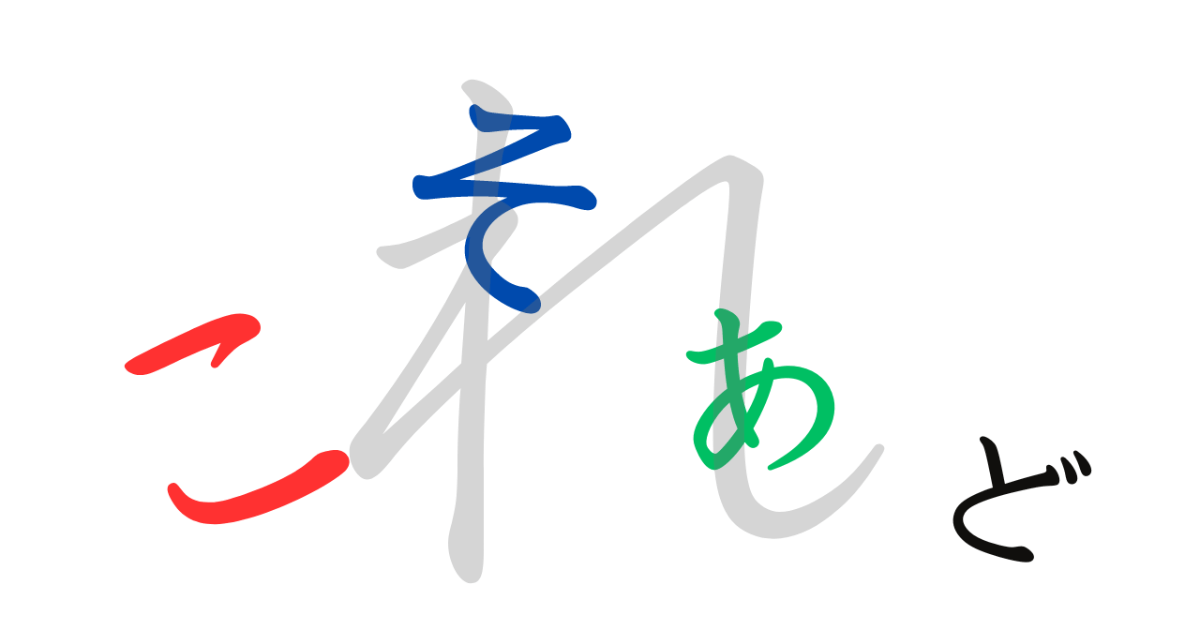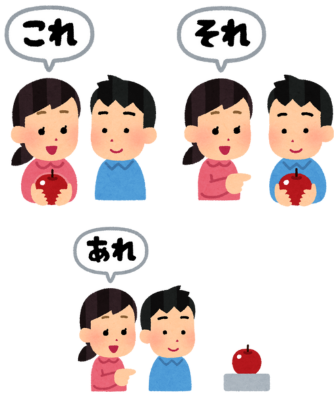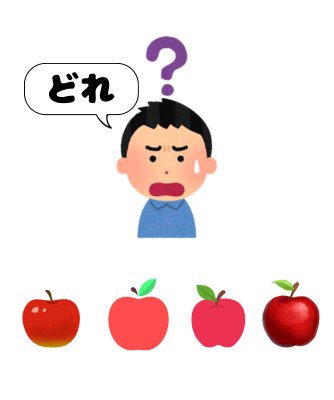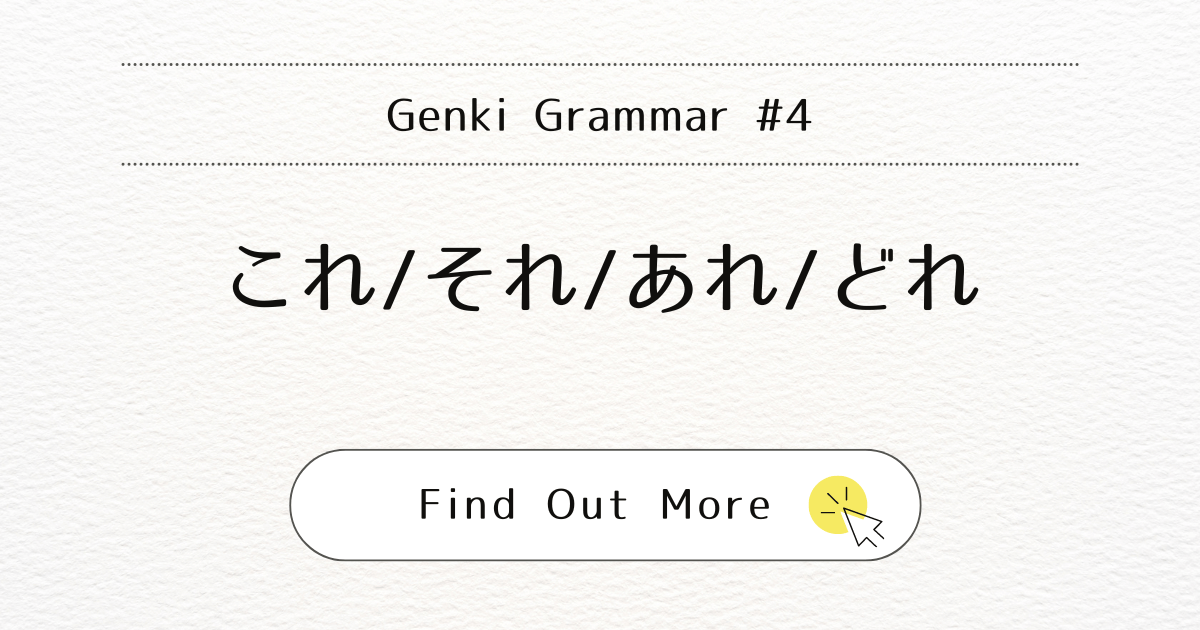
Introduction
Learning how to use the words “これ” (kore), “それ” (sore), “あれ” (are), and “どれ” (dore) is essential in Japanese. These words help you distinguish between different objects based on their distance from the speaker and the listener. In this blog post, we’ll guide you through how to use them effectively.
What It Means
- これ (kore): Refers to an object close to the speaker, meaning “this.”
- それ (sore): Refers to an object near the listener, meaning “that.”
- あれ (are): Refers to an object far from both the speaker and the listener, meaning “that over there.”
- どれ (dore): Used to ask “which one” among multiple objects.
When You Use It
Use these words based on the relative positions of the objects:
- これ: When the object is close to you (the speaker).
- それ: When the object is close to the person you are talking to.
- あれ: When the object is far from both you and the person you’re talking to.

- どれ: To ask which object out of a selection.

Examples
Here are some practical examples:
- これはいくらですか。 (Kore wa ikura desu ka.)
How much is this? - それはさんびゃくえんです。 (Sore wa sanbyaku en desu.)
That is 300 yen. - これは本です。 (Kore wa hon desu.)
This is a book. - それは本です。 (Sore wa hon desu.)
That is a book. - あれは本です。 (Are wa hon desu.)
That over there is a book. - どれですか。 (Dore desu ka.)
Which one is it?
Note
- When referring to people in a polite context, avoid using “これ,” “それ,” “あれ,” and “どれ” directly. Instead, use “こちら” (kochira), “そちら” (sochira), and “あちら” (achira).
- Correct Example: こちらはともだちのマリアさんです。 (Kochira wa tomodachi no Maria-san desu.)
This is my friend Maria. - Incorrect Example: これはともだちのマリアさんです。 (Kore wa tomodachi no Maria-san desu.)
This is my friend Maria.
- Correct Example: こちらはともだちのマリアさんです。 (Kochira wa tomodachi no Maria-san desu.)
- You can use the “-re” series words when referring to a person mentioned earlier or when pointing to a picture of someone.
- You and a friend are looking through an old photo album. The friend asks about a person in one of the photos.
- Friend: このひとは 誰ですか。(Kono hito wa dare desu ka.)
Who is this person? - You: これは私のおじです。(Kore wa watashi no oji desu.)
This is my uncle.
Conclusion
Mastering “これ(kore),” “それ(sore),” “あれ(are),” and “どれ(dore)” will help you communicate more effectively in Japanese. By understanding their specific uses and practicing with them, you’ll be able to accurately refer to different objects in any conversation.



